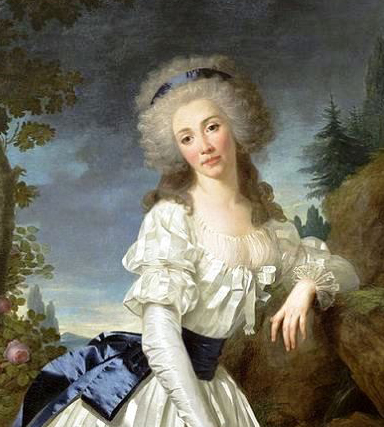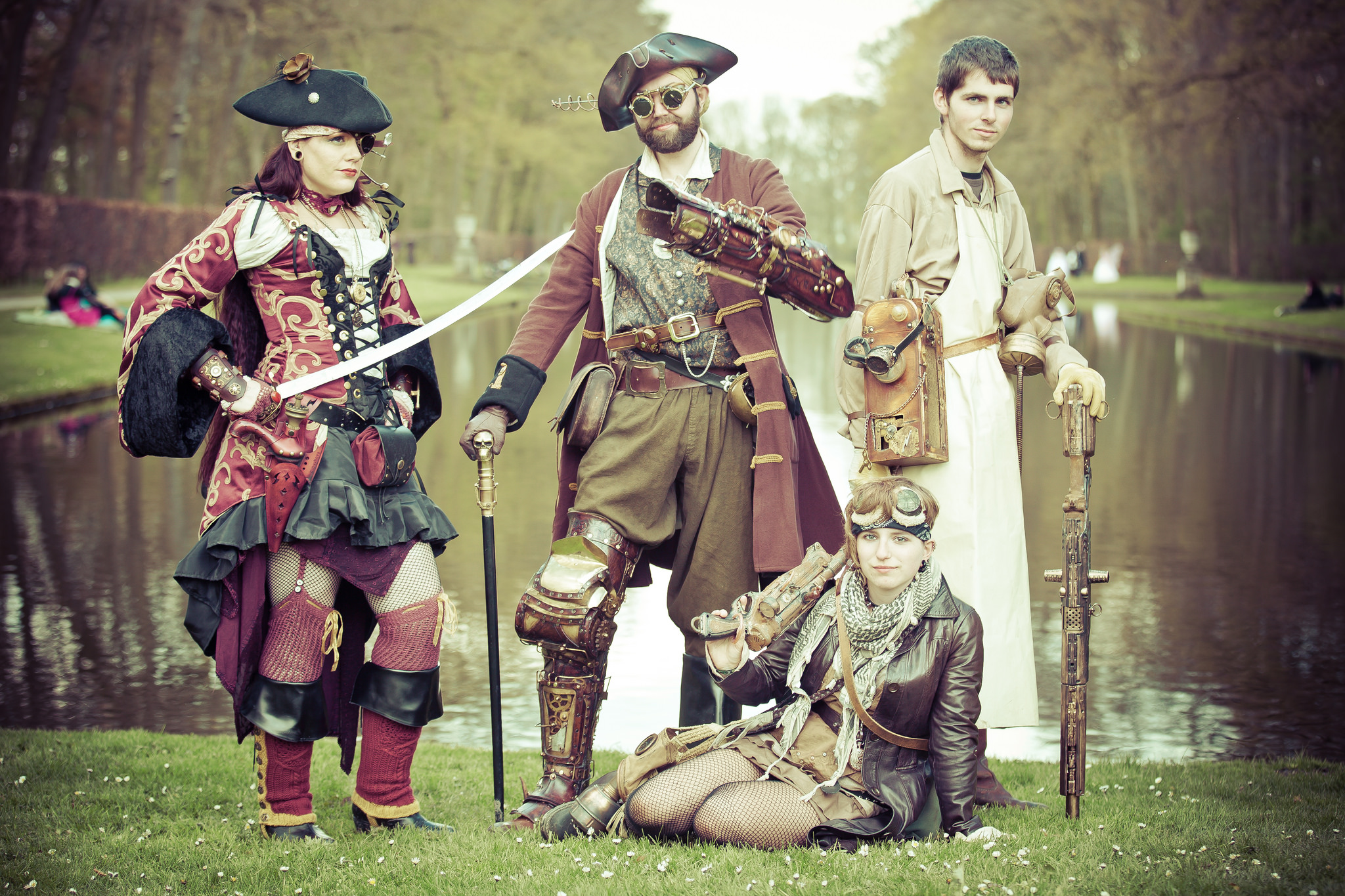Fabulous! The Art of Being an Historical Fashion Icon

by Lindsey Eastman. Originally published for the March / April 2009 issue of Finery.

How do you stand out in a sea of French Hood and giant turn back sleeves? Or differentiate yourself from every other woman in a sacque-back gown and lace? How do you make a bustle gown the toast of the room?
These are the questions that plagued our female forebears when those styles were the height of fashion, and they have come back to haunt historical costumers. It may be even harder for us than for them because it is so easy to lose our modern selves when we are buried in unfamiliar stays, petticoats, and hairstyles. How do you show any personality when you are covered with the ridiculous, but beautiful, conventions of another time? When we create a period dress of our own design we are not channeling a person who was real, but rather putting ourselves into the past. The challenge is showing our personal style without sacrificing the history.
I think the answer lies with the women of history who made their imprint on the world and on fashion. When facing a bevy of beauties vying for the favor of King Henry VIII, Anne Boleyn set herself apart with sparkling wit, the word “no,” and a few cutting edge fashions. The most iconic is the narcissistic and utterly fabulous “B” necklace seen in the most famous portrait of the ill-fated queen. Jewels were nothing new, and neither was using your initials as part of personal decoration, but it was a remarkable thing for a woman, of only barely noble heritage, to so proudly promote herself. In a constant parade of jewels and silks was it one golden “B” that caught the eye of Henry VIII? Perhaps not, but it marks Anne Boleyn apart from her peers as a woman all her own. It is a symbol of her independence, spirit, and personality.
In the eighteenth century, nearly all of England was in love with Georgiana, Duchess of Devonshire. Not only did she participate in politics, but also led the world of fashion and nearly every woman in the country slavishly copied her. Her most famous fashion innovation was wearing massive ostrich plumes in her already towering hairstyles. This overnight sensation was rumored to drive the poor giant birds to near extinction and ruined the view at plays and operas. Despite the impracticalities, it cannot be denied that those feathers were completely chic and completely Georgiana.
Another true original, this time from the nineteenth century, was Amélie Gautreau, better known as John Singer Sargent’s Madame X. Her plunging neckline and jeweled straps were not only daring choices on their own, but they also highlighted the simple elegance of a gown that shunned the fussy lace and ruffles so popular at the time. She caused a scandal with her pose and slipping strap, and at the same time inspired the “little black dress” for generations to come.
Queen Victoria, known for an entirely different type of black dress, found a way to assert her own personal style and preferences despite the obligation of the monarchy and widowhood. She set aside the heavy gold crowns of state for a tiny diamond crown made specifically for her. It is a petite, feminine thing, sparkling and echoing the crowns of old, while also being something entirely its own. It is possibly the most iconic symbol of a queen who was otherwise not exactly known for her fashion choices.
The difficult part is applying these ideas to historical costume. We can’t innovate without taking away the very history we are trying to recreate, but we can consciously pick elements that say something about ourselves, instead of opting for the standard of any given period. That is what will make you look different than the girl in the Regency curls next to you. Theatrical costume designers use these tricks to illustrate character (though some with more finesse and subtlety than others!) and we can do exactly the same thing for ourselves. For example, in the 1995 BBC version of Pride and Prejudice, the Bennet girls all dress essentially the same. They wear high-waisted gowns in pastel colors and delicate prints and yet somehow they all look very different. The costume designer put Mary, the bookish prude, in gowns with a high neck, while Lydia, the wild flirt, wears low cut dresses nearly all the time. Mr. Bingley’s sisters, on the other hand, skip subtlety altogether and flaunt their wealth and snobbery with bright colors and busy trim. Each choice, down to the tiniest pleat, is there for a reason. Whether the differences are flashy or simple they still broadcast something about the wearer. What do you want your costumes to say about you?
Perhaps you will take inspiration from the “B” of Anne Boleyn and incorporate your initials into the embroidery of your gowns. Maybe you will always wear your fabulously decorated hats at the same cheeky angle or choose striking and unusual color combinations. Take your cue from these famous ladies of fashion, find the elements available to you in any given period, and craft something that is uniquely yours. And remember that above any clever bit of style, all these ladies had the essential quality of a true original – confidence.



Leave a comment